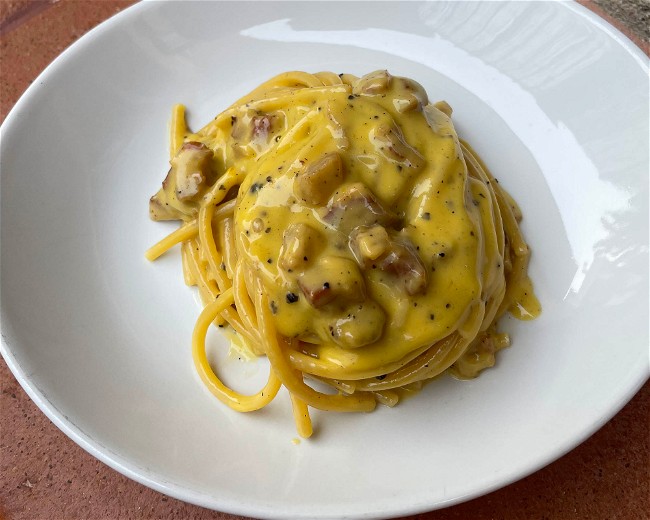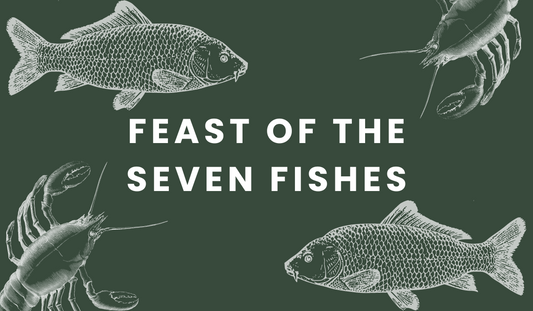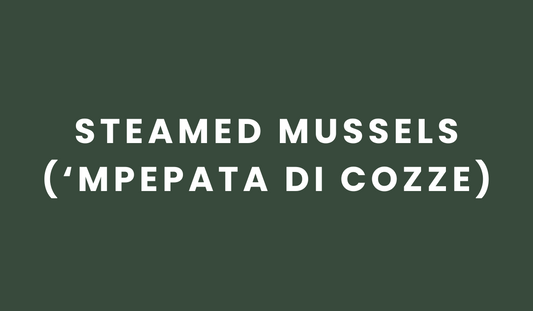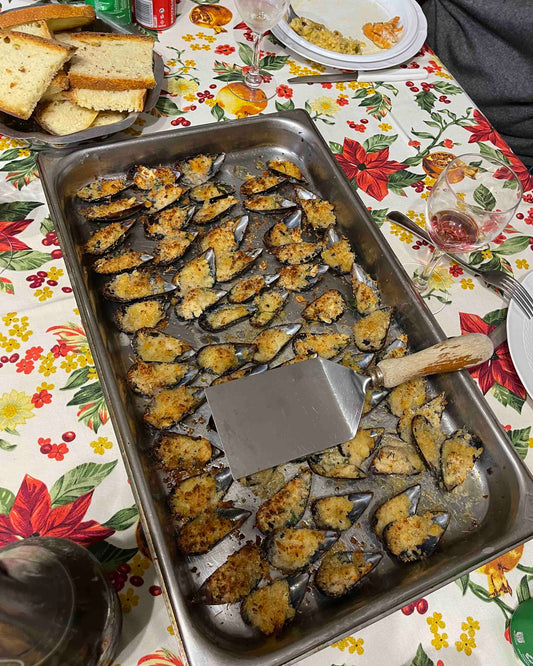Eggs, guanciale, and pasta, Classic Italian Pasta Carbonara is a favorite in the U.S. because it’s basically American breakfast wrapped up into pasta form. It’s another Italian dish that's so incredibly simple, delicious, and satisfying.
Unfortunately, a lot of people get this dish wrong namely because they overcomplicate its simplicity.
Pasta alla Carbonara is also one of the most adulterated Italian dishes in the world. So much so that it’s now difficult to find a really amazing and authentic carbonara outside of Italy.
But before we talk about how to make this dish let's dive into its history!

The Origin of Pasta Alla Carbonara
Italians absolutely love to debate, it's part of their culture. Wine, fashion, coffee, olive oil, history it's all fair game. They especially love to talk about the origins of things, specifically food.
So naturally there are many theories about the origin of pasta alla carbonara. Today we explore three theories of origin for this classic Roman dish!
The Apennine Origin Story
In the Apennine origin story it's believed that pasta carbonara was invented by the workers who made charcoal. These workers were called the Charcoal Burners, or Carbonari in Romanesco. The Charcoal Burners would have made this dish by using ingredients that were easily accessible in local markets.
What's the Deal with the Charcoal?
Making charcoal is a very long and time consuming process and it required workers to monitor it for a long time. Therefore, the workers needed to have easy access to ingredients in order to prepare meals.
The Charcoal Burners used to prepare a dish called cacio e ova which is originally from Lazio and Abruzzo. The workers would make the dish the day before and bring it to work in their 'tascapane' then eat it with their hands.
It's believed that pasta alla carbonara is an evolution of cacio e ova.
Pepper was a readily available ingredient at the time because it was used for the preservation of pork. Olive oil was too expensive for the charcoal burners to afford so they would often use animal fat or lard.
The Abruzzese-Apennine origin of this dish offers another fun interpretation for the name of this dish. The term “Carbonada” in Abruzzo refers to pancetta, pork that is salted and cooked on coals.
The Neapolitan Origin Story
Another theory is that pasta carbonara has roots in Neapolitan cuisine. This theory explores the idea that the origin of the dish goes back to the 1837 treatise Ippolito Cavalcanti’s theoretical-practical cooking.
Neapolitan cuisine is arguable the best and most unique in Italy. It's common practice to season some dishes, with a technique and with ingredients identical to those of carbonara. there are several dishes that include cooking a beaten egg, cheese, and pepper.
This technique appears in some Neapolitan recipes before the work of Cavalcanti and is still widely used. You can often find it in dishes including pasta and peas, pasta with zucchini, tripe “pasticciola”, and meat stew with peas.
The Allied Origin Story
It's believed that this is the true origin of pasta alla carbonara and it's a fascinating story. In 1944, immediately following the liberation of Rome during World War II, chef Renato Gualandi created pasta alla carbonara for the first time.
When Rome was liberated there was an intense food shortage. One of the few resources was military rations distributed by the allied troops. These rations included eggs, bacon, and pasta. The bacon was brought by American soldiers.
Using what he had on hand, Renato Gualandi, a chef from Bologna, Italy, made a pasta dish by slowly rendering the fat of the bacon and creating a beautiful cream sauce with eggs, black pepper, and grated cheese.
This theory also explain why in carbonara, unlike other sauces such as amatriciana, pancetta and guanciale are often referred to as equivalent ingredients. For reference, pancetta and bacon are the same cut of meat, while guanciale comes from the jowl of the pig.
Gualandi was the chef for the allied troops in Rome from September 1944 to April 1945 and this short period was enough time to spread the fame of carbonara across the capital.
Obviously, the theory of the one of Rome's most famous dishes, carbonara, having been invented in Riccione in 1944 by a Bolognese chef using the rations of the American army, can generate some mixed feelings for Romans. However, this story makes a lot of sense and we shouldn't back away from the history of food just because it doesn't align with the specific ideals of place.
We believe that Carbonara is the result of the great capacity of Italian culinary improvisation which ended up creating a masterpiece during one of the most difficult moments in human history.
The Correct Name for this Dish
The correct and full Italian name for this dish is Pasta alla Carbonara or Spaghetti alla Carbonara. However, in English, especially in the U.S., it's often shorted to just Pasta Carbonara or Carbonara.
The Rules of Pasta Carbonara
This is an authentic Italian recipe that Giuseppe has been working to perfect for years. When we first met years ago he would always make this dish for me.
Then when we moved to the U.S. he had to substitute guanciale for bacon. Surprisingly, (and very un-Italian of us) we almost prefer pasta carbonara with bacon instead of guanciale.
The smokiness of the bacon adds another dimension to the dish. So if you can’t find guanciale at your local market or butcher then thick sliced bacon will definitely do the trick!
While it's understandable to make substitutes for ingredients that aren't easily accessible in the U.S. for Italian dishes we've seen quite a few changes to this dish that need to be discussed.
Here are the rules of pasta alla carbonara:
- No milk or cream
- No garlic
- No onions
- No parsley
- No mushrooms or any other vegetables
- Only parmigiano and pecorino
No Cream
Authentic Italian carbonara is incredibly decadent and creamy, but it does not contain any cream or milk. And it doesn't need it. Once you learn how to properly make this dish we promise you won't miss the cream.
No Garlic or Onion
Traditional pasta carbonara does not contain any garlic or onion. While Italians absolutely adore alliums, this isn't the time or place for them. When cooked properly the smokiness and depth of the guanciale, or bacon, add loads of flavor and that's all you need, we promise.
No Parsley
Parsley is a delicious herb but it doesn't belong in a pan rolling around with fried pig cheek and egg yolk. It's just not part of this dish. Sorry!
No Mushrooms or Other Veggies
Again, this dish has like four ingredients. Don't make Italian carbonara if you're looking for a dish that helps you get in more vegetables. In fact, this dish is the opposite of that. Its for folks that don't want want to eat vegetables.
A Beacon of Italian Cuisine
In short, leave our girl carbonara alone! She wants to be a beacon of basic, traditional Italian flavors. And if you do decide to riff on the original recipe just call it something else, cause it's not carbonara : )

How to Make Classic Italian Pasta Carbonara
First, bring a large pot of water to a boil. In the meantime grate the cheese(s), slice the guanciale or bacon into 1/4 inch pieces.
Then add the guanciale to a large pan and heat on low. This is the most important step of the process so try not to skip it. The fat from the guanciale needs to fully render, or melt and this can take a bit of time.
In the meantime make the egg yolk, cheese, and black pepper mixture for the sauce. When the fat has fully rendered cut the heat and remove the guanciale from the pan using a slotted spoon, set aside.
Once boiling generously salt the pasta water, then add the pasta. Cook until a few minutes before it’s al dente and make sure to reserve at least 1 cup of pasta water.
Shortly before removing the pasta from the water add 1 ladle of pasta water to the fat, then turn the heat to high and bring to a boil. Add the pasta to the pan and stir continuously. Add additional pasta water as things dry out and continue cooking for an additional 2-3 minutes.
Cut the heat then add the egg and cheese mixture. Stir continuously to avoid any scrambling. Serve and enjoy immediately!
Shop our collection of high quality Italian Extra Virgin Olive Oils!
Other recipes you might like...
Pasta with Pancetta and Zucchini
Tagliatelle with Ragù Bolognese
Hey, we wrote a cookbook and guide called The Olive Oil Enthusiast, have you ordered it yet?
If you make this recipe please let a comment and let us know! We love to hear from you. If you’re on Instagram, Facebook, or TikTok don’t forget to tag us and use #EXAUoliveoil so we can repost!







